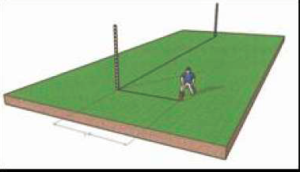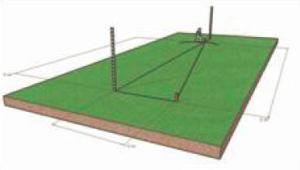Orchard – Planting an orchard refers to the growing of fruit plants in an orderly manner and maintaining them for gradual economic return.
Plantation – Plantation refers to a fairly large area with a particular type of fruit crop cultivated. Eg: Mango Plantation, Apple Plantation, Coconut Plantation, etc.
Estate – Estate refers to a large area (more than 1000 acres) of cultivation of a single crop. This terminology was used in the earlier days (British Empire). Example: Coffee Estate and Tea Estate.
Watch Lecture Video
- Orchards are a long-term investment and require a lot of planning and expertise.
- While planning and planting a new orchard, due attention should be paid to various aspects like selection of location and site, nature of soil and sub-land, planning of suitable types and varieties of fruits, proper planting distance, and procurement of plants from reliable plant nurseries.
Preparation of land
- The land should be cleared properly for the free movement of men and machinery.
- All trees, shrubs, and vines should be removed.
- The soil of the chosen area needs to be fully prepared for growing fruit plants.
- New virgin land requires deep plowing.
- By plowing the land frequently, the soil should be fine tilth.
Layout plan
- Marking the position of the plant in the field is called layout.
- The layout plan of the orchard should be carefully prepared, preferably in consultation with horticulturists.
- Orchard layout plan includes planned provision for garden paths, roads, irrigation drains, and farm building.
- A sketch of the proposed orchard should be prepared before starting the actual planting.
Method of layout
- According to the square system for planting orchards, a baseline is first established and along this line, the position of the trees is marked by laying wooden sticks in the ground.
- Another baseline is marked at right angles to the first baseline, then with the help of a carpenter’s square or a cross-staff on the other side of the field.
- A right angle can also be drawn with the help of a measuring tape.
- One end of this tape is fixed at a distance of three meters from the corner of the first line and then the tape is extended to a distance of four meters along the second baseline.
- The diagonal distance between these two points should be five meters.
 Wooden sticks are buried in the ground at the desired distance along the second row.
Wooden sticks are buried in the ground at the desired distance along the second row.- All four lines are drawn in this way and wooden sticks are fixed.

- Three men, moving one peg into the field and the other along the baseline, can easily mark the plantings across the field, fixing the alignment.
Aims
- Providing enough space for plants.
- To accommodate more number of plants.
- For easy intercultural operation.
Layout Systems
1. Square system:
- In this system, a tree is planted at each corner of a square.
- The distance between row to row and plant to plant is the same.
Merits and demerits:
- The most used and simplest system of layout
- The possibility of conducting inter-culture operations in both directions is the biggest advantage of this system.
- The major disadvantage of this system is that a lot of space is wasted in the center of each square.
2. Rectangular system:
- Similar to the square system, except that the spacing between the plants in the row and the spacing between the rows are not the same but different.
- Row to row distance is greater than a plant-to-plant distance in a row.
Merits and demerits:
- It has almost all the advantages of the square system but cultivation is somewhat difficult especially when the trees are fully grown.
3. Quincunx or filler system:
- It is also known as a filler or diagonal system.
- It is a modification of a square system of layout that utilizes the empty space in the center of each square by planting another plant called a filler tree.
- Usually, the filler tree will be precocious and of short duration, and not of the same type as the one planted at the corner of the square. Guava, Phalsa, Ber, Papaya, Peach, Kinnow are important filler trees. They produce few crops before the permanent tree bears fruit.
- The filler tree is removed when the main fruit trees reach full height and begin to bear fruit
- This method is followed when the distance between permanent trees is 8 m or more or where the growth of permanent trees is very slow and fruiting takes a long time. Like Sapota, Jackfruit.
Merits and demerits:
- The main advantage of this system is that the plant population is about to double than the square system.
- The greatest disadvantage of this system is that it is difficult to carry out intercultural operations on account of the filler tree.
4. Hexagonal system:
- It is also called an equilateral system. Sometimes a seventh tree is placed in the center of the hexagon, and then this is called the septul system.
- In this system, trees are planted in each corner of the equilateral triangle.
- This system differs from the square system in that the distance between the rows is less than the distance between the trees in a row, but the tree-to-tree distance remains the same in the six directions.
- This system is generally used in areas where land is expensive and very fertile with good availability of water.
Merits and demerits:
- This system allows interculture in all three directions.
- Plants completely occupy the land without leaving any free space as in a square system
- In this system, 15% more plants are taken as compared to the square planting system.
- This system is generally not used as it is difficult to layout and inter-culture operation in such orchards is difficult.
5. Contour system
- This system is generally adopted in hilly areas with high slopes but it is similar to a square/rectangular system.
- Under such conditions, trees can be planted well in rows following the contour of the soil with only a slight slope.
- Irrigation and farming become easier as this system reduces the chances of soil erosion.
- In this system, the layout is done like a square/rectangular system, first by setting the baseline at the lowest level and then marking up from the base of the trees.
- Bench terrace is used where the slope is more than 10 percent.
6. Triangular system
- In this system, the trees are planted like a square system but in alternate rows like second, fourth, sixth, and so on, plants are planted in between the first, third, fifth, and so on alternate rows.
- This system provides more open space for trees and for intercropping.
References cited
1.Chadha, K.L. Handbook of Horticulture (2002) ICAR, NewDelhi
2.Jitendra Singh Basic Horticulture (2011) Kalyani Publications, New Delhi
3.K.V.Peter Basics Horticulture (2009) New India Publishing Agency
4. Jitendra Singh Fundamentals of Horticulture, Kalyani Publications, New Delhi
